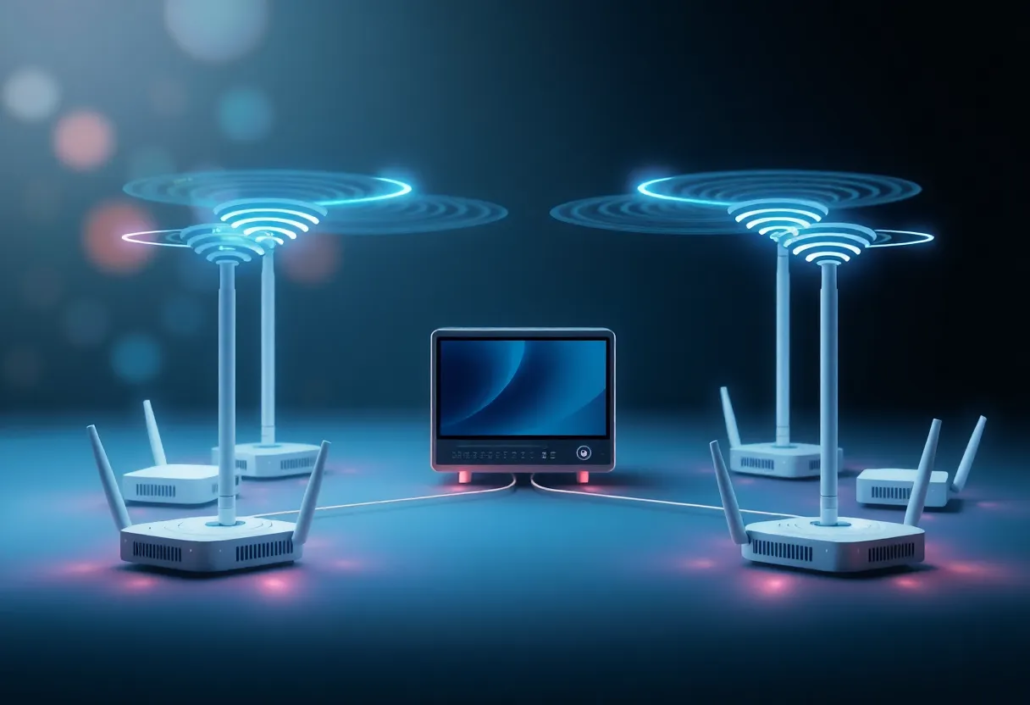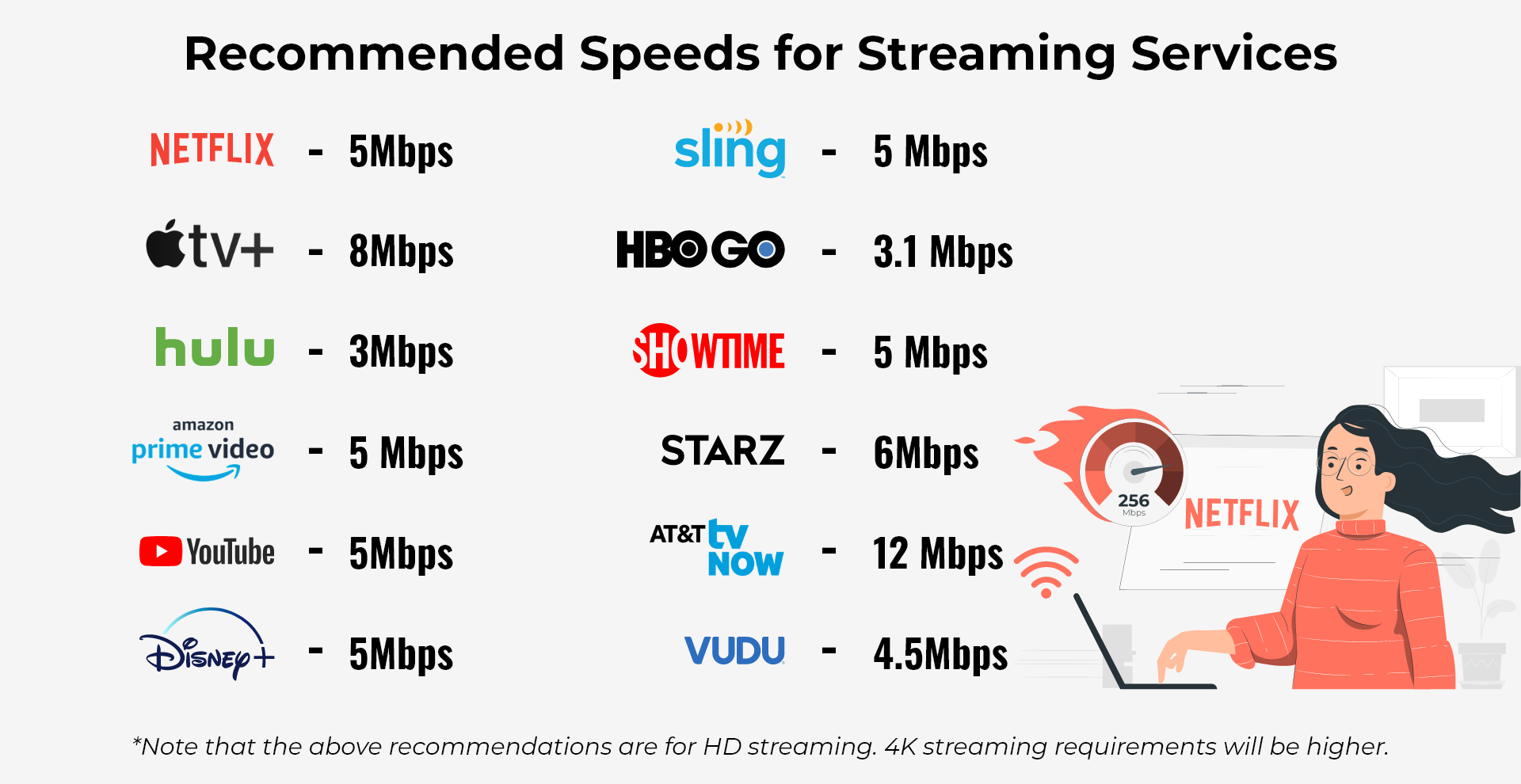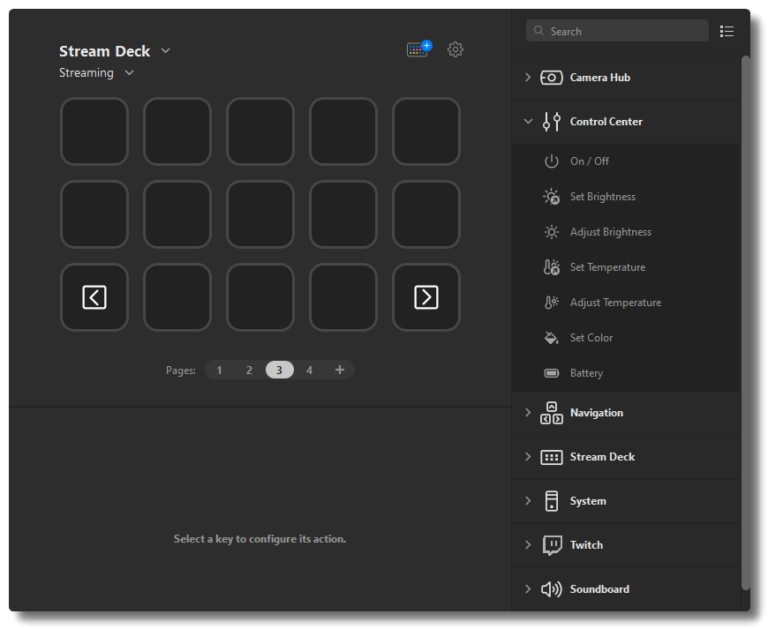How Much Wifi Does Streaming Use: Essential Insights
Streaming uses a significant amount of WiFi data. The exact amount depends on the quality of the stream.
For example, higher resolution videos use more data. Streaming has become a daily activity for many. Whether you watch movies, TV shows, or live sports, knowing the data consumption is crucial. Understanding WiFi usage can help you manage your data plan and avoid extra charges.
Different streaming services and video qualities use varying amounts of data. From standard definition to ultra-high definition, each has its own data needs. In this blog, we will explore how much WiFi streaming uses. This will help you make informed decisions about your streaming habits and data plans. Let’s dive in and see what you need to know about streaming and WiFi usage.
Introduction To Wifi Usage In Streaming
Streaming has become an integral part of our daily lives. Whether you enjoy movies, TV shows, or live events, streaming is a convenient way to access content. But have you ever wondered how much Wifi streaming uses? Understanding Wifi usage for streaming can help you manage your internet data better and ensure a smooth viewing experience.
Why Wifi Matters For Streaming
Wifi plays a crucial role in streaming. A stable and fast connection ensures uninterrupted viewing. Slow Wifi can lead to buffering, which disrupts your experience. Streaming platforms require different amounts of data based on the video quality. High-definition content uses more data compared to standard definition.
Streaming platforms like Netflix, YouTube, and Hulu have different data requirements. Knowing these can help you plan your Wifi usage. For instance, Netflix uses about 3 GB per hour for HD videos. YouTube varies depending on the video resolution. Hulu’s usage is similar to Netflix.
Common Streaming Platforms
Several platforms dominate the streaming landscape. Netflix, a popular choice, offers a range of video qualities. YouTube, known for diverse content, adjusts quality based on your Wifi speed. Hulu provides a mix of live TV and on-demand content. Each platform has specific data usage needs.
Netflix has different plans that affect data usage. Basic plan streams in SD, which uses less Wifi. The premium plan streams in 4K, using significantly more data. YouTube’s auto-adjust feature changes quality based on Wifi speed. This ensures smooth playback but varies data usage. Hulu’s live TV can use more data compared to on-demand shows.
Understanding these differences helps in managing Wifi usage. It allows you to enjoy streaming without worrying about exceeding your data limits.

Credit: www.reddit.com
Factors Affecting Wifi Consumption
When it comes to streaming your favorite shows, movies, or videos, the amount of WiFi you use can vary widely. Understanding the factors that affect WiFi consumption can help you manage your data usage effectively. Let’s dive into some of the key elements that play a role in how much WiFi streaming uses.
Video Quality Settings
The quality of the video you stream is one of the most significant factors affecting WiFi consumption. Higher video quality requires more data. For example, streaming a video in 4K Ultra HD will use significantly more WiFi than streaming the same video in standard definition (SD).
Most streaming services like Netflix or YouTube allow you to adjust the video quality settings. If you are concerned about data usage, consider lowering the quality. Watching in SD can save a lot of data compared to HD or 4K. This can be especially helpful if you have a limited data plan.
Streaming Device Types
The type of device you use for streaming also impacts WiFi consumption. Streaming on a smartphone usually consumes less data compared to a large screen TV. This is because the resolution and screen size are smaller, requiring less data to deliver a clear picture.
However, if you cast from your phone to a TV, the data usage will align more closely with the TV’s requirements. So, if you are looking to save on WiFi, consider sticking to smaller screens for streaming.
What other factors do you think might affect your WiFi consumption while streaming? Think about your daily habits and how you can adjust them to optimize your data usage. Small changes can make a big difference!
Data Usage By Popular Streaming Services
Streaming has become an integral part of our daily lives. From catching up on the latest episodes of our favorite shows to binge-watching entire seasons, it’s no wonder that data usage can quickly add up. But how much data do popular streaming services like Netflix and YouTube actually use? Let’s break it down.
Netflix Data Consumption
Netflix offers different streaming quality options, which affect data usage significantly. Here’s a quick overview:
- Low quality: Uses about 0.3 GB per hour.
- Standard definition (SD): Consumes approximately 1 GB per hour.
- High definition (HD): Requires around 3 GB per hour.
- Ultra HD (4K): Can use up to 7 GB per hour.
Have you ever wondered why your internet data vanishes so quickly? If you’re streaming in 4K, it’s easy to see how a few episodes can eat up a large chunk of your data plan. Keep these numbers in mind next time you binge-watch your favorite series.
Youtube Data Consumption
Just like Netflix, YouTube’s data usage varies based on video quality. Here’s a breakdown:
- 240p: Uses about 0.1 GB per hour.
- 480p (SD): Consumes around 0.25 GB per hour.
- 720p (HD): Requires approximately 0.5 GB per hour.
- 1080p (Full HD): Can use up to 1.5 GB per hour.
- 1440p (2K): Uses about 3 GB per hour.
- 2160p (4K): Consumes up to 7 GB per hour.
Ever noticed your mobile data disappearing after watching YouTube for just a short while? Check the video quality settings. Watching in HD or higher can quickly drain your data.
Understanding data consumption is crucial for managing your internet usage and avoiding unexpected charges. Next time you stream, consider adjusting the quality to match your data plan.
What streaming quality do you usually prefer? Are you willing to compromise on quality to save data? Share your thoughts in the comments!
Impact Of Streaming Quality On Data Usage
Streaming quality affects how much data your WiFi uses. Different resolutions consume different amounts of data. Understanding this can help manage data usage effectively.
Standard Definition (sd)
SD streaming uses the least data. It streams at 480p resolution. Watching in SD uses about 1 GB of data per hour. This is suitable for those with limited data plans. It also works well on slower internet connections.
High Definition (hd)
HD streaming offers better picture quality. It streams at 720p or 1080p resolution. Watching in HD uses more data. It consumes around 3 GB per hour at 720p. At 1080p, it uses about 4.5 GB per hour. Ensure your internet can handle this data usage.
Ultra High Definition (uhd)
UHD streaming provides the best quality. It streams at 4K resolution. Watching in UHD uses a lot of data. It can consume up to 7 GB per hour. This requires a strong, fast internet connection. Consider your data plan before streaming in UHD.
Comparing Data Usage: Streaming Vs. Other Activities
Streaming content has become a part of our daily lives, but have you ever wondered how much WiFi it uses compared to other online activities? Understanding this can help you manage your data better and avoid any unpleasant surprises on your internet bill. Let’s dive into the data usage of streaming and compare it with online gaming, video conferencing, and social media browsing.
Online Gaming
Online gaming is often thought to be a data hog, but it might surprise you. Most online games use about 40-300 MB per hour. This is significantly less than streaming video.
However, downloading game updates or new games can consume several gigabytes. So, while playing the game doesn’t use much data, keep an eye on those downloads.
Have you ever paused your game to let a huge update finish downloading? That’s where the real data usage happens.
Video Conferencing
Video conferencing is another activity that many of us do regularly. Apps like Zoom or Google Meet use around 540 MB to 1.62 GB per hour for HD video calls.
If you’re in a meeting for several hours, this adds up quickly. It’s even higher for group calls since more data is needed to handle multiple video streams.
Consider using audio-only mode if you want to save on data. You’ll still get the information, and your data plan will thank you.
Social Media Browsing
Browsing social media might seem harmless, but it can still use a considerable amount of data. Scrolling through Facebook, Instagram, or Twitter uses around 1.5 MB per minute.
That’s about 90 MB per hour. Watching videos on these platforms will use even more data, similar to streaming.
Ever found yourself going down a rabbit hole of videos and memes? It’s easy to lose track of time and data usage.
Understanding these comparisons can help you manage your internet data more effectively. What will you adjust in your online habits to save on data? Share your thoughts in the comments below!

Credit: aveq.info
Tips To Manage Wifi Usage While Streaming
Managing wifi usage while streaming is important. Streaming can consume a lot of data. Here are some tips to help you control your wifi usage effectively.
Adjusting Video Quality
Lowering video quality reduces data usage. Platforms like Netflix and YouTube offer quality settings. Choose a lower resolution to save data. For example, switch from HD to SD. This change makes a big difference.
Using Download Features
Many streaming services have download options. Download content when connected to wifi. Then, watch offline without using data. This method works great for long shows or movies. Use it to save your wifi for other tasks.
Monitoring Data Usage
Keep an eye on your data usage. Many devices and apps provide usage statistics. Check these to see how much data you use. Set alerts to inform you when you’re close to your limit. Being aware helps you manage your wifi better.
Choosing The Right Internet Plan
Choosing the right internet plan is crucial for a seamless streaming experience. Understanding your bandwidth needs and considering unlimited data plans can help you make an informed decision. This guide will provide insights to help you pick the best plan for your streaming habits.
Understanding Bandwidth Needs
Bandwidth measures the amount of data transferred in a given time. Streaming services use different amounts of bandwidth. For example, streaming in standard definition (SD) uses less bandwidth than high definition (HD) or 4K. Knowing your streaming habits will help you choose the right plan.
If you often stream HD or 4K content, you need more bandwidth. A plan with higher Mbps (megabits per second) will be more suitable. For occasional SD streaming, a lower Mbps plan might suffice. Always consider the number of devices using the internet simultaneously. This affects the overall bandwidth required.
Unlimited Data Plans
Unlimited data plans offer great flexibility for avid streamers. You won’t worry about exceeding data limits. This is especially useful for households with multiple users. Streaming HD or 4K content consumes a lot of data. An unlimited plan ensures you can stream without interruption.
While unlimited data plans can be more expensive, they provide peace of mind. You avoid extra charges and can enjoy continuous streaming. Check with your provider for the best options available. Comparing plans and their benefits will help you find the right fit for your needs.

Credit: citizens.coop
Future Trends In Streaming And Wifi Usage
Streaming services are evolving every day. As technology advances, so do the ways we use and consume Wifi. The future of streaming promises faster speeds, better quality, and more efficient data usage. Let’s explore some of the emerging trends.
Advancements In Compression Technology
New compression technologies are making streaming more efficient. These technologies reduce the amount of data needed. This means you can watch high-quality videos with less Wifi usage. Better compression also means faster loading times. No more buffering.
Companies are constantly improving these technologies. They aim to provide the best experience with minimal data. Expect even more efficient compression in the future. This will make streaming smoother and more enjoyable.
5g And Its Impact On Streaming
5G is the next big thing in mobile networks. It promises faster speeds and lower latency. This will significantly impact streaming services. With 5G, you can expect almost instant streaming. High-definition videos will load in seconds.
5G will also support more devices. This means you can stream on multiple devices without lag. The future of streaming looks bright with 5G. It will make streaming more accessible and enjoyable for everyone.
Frequently Asked Questions
Does Streaming Use A Lot Of Wifi?
Yes, streaming uses a significant amount of WiFi data. Higher quality videos consume more bandwidth. Adjust video settings to manage usage.
How Many Gb Do I Need A Month To Stream Tv?
To stream TV, you need around 150 GB per month for HD quality. For 4K streaming, you might need 700 GB.
How Many Gb Does A 2 Hour Movie Use On Netflix?
A 2-hour movie on Netflix uses approximately 2 GB of data in standard definition. High definition uses about 6 GB.
Does Streaming Increase The Wifi Bill?
Streaming can increase your wifi bill if your internet plan has data limits. Heavy usage may result in extra charges.
Conclusion
Streaming uses varying amounts of Wifi based on video quality. Lower resolutions use less data. High-definition streaming consumes more. Knowing your streaming habits helps manage data. Keep an eye on your Wifi usage. Adjust settings to save data. Stay within your data limits.
This ensures smooth streaming experiences. Enjoy your favorite content without worries. Happy streaming!





